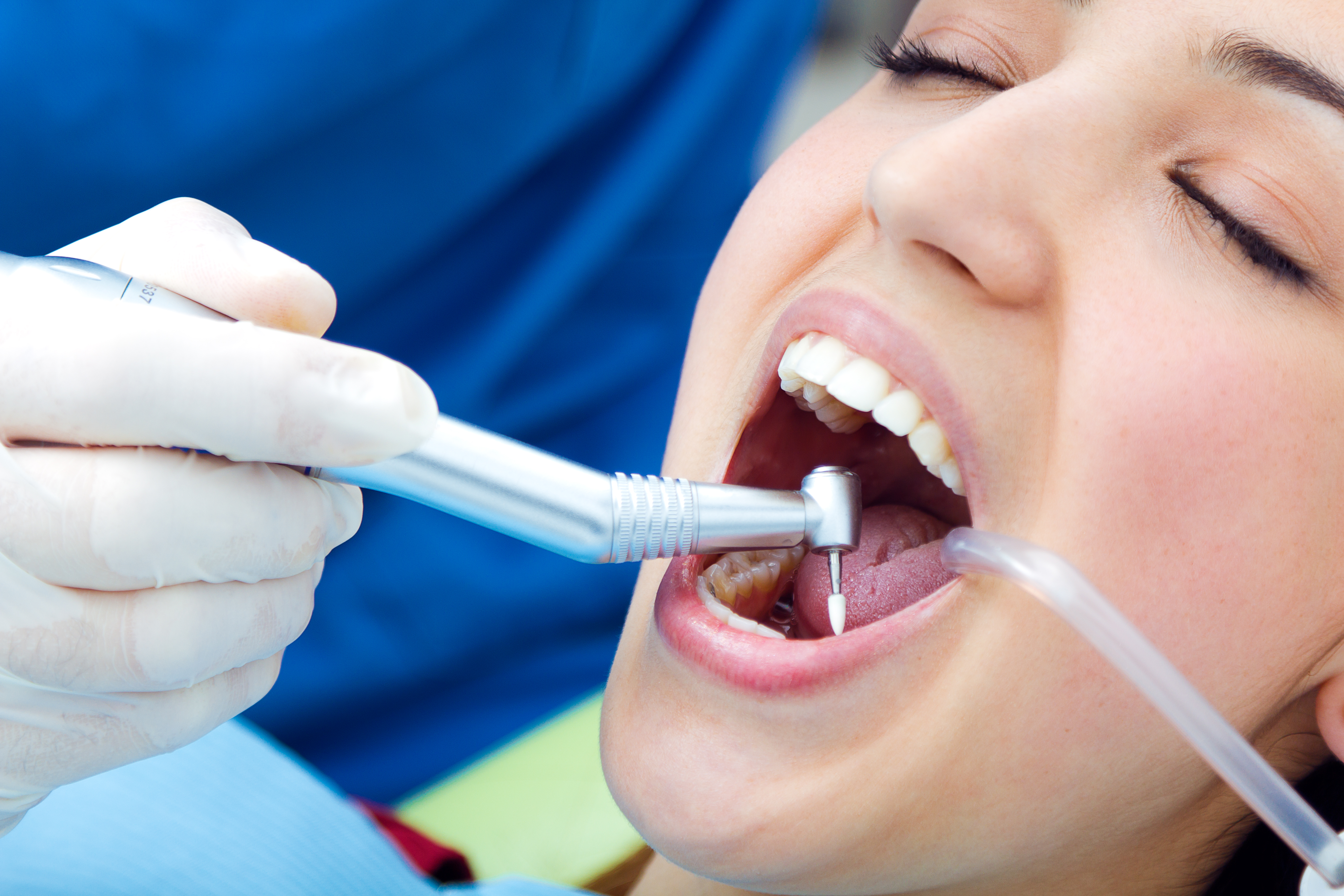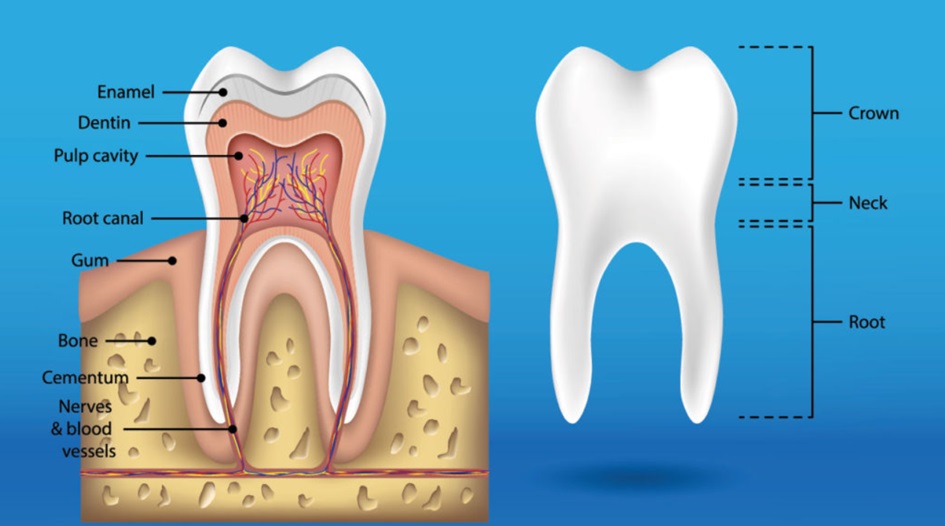Endodontics: What You Need to Know About Root Canal Treatment

Endodontics: What You Need to Know About Root Canal Treatment
The purpose of root canal treatment is to eliminate
toothaches that cause discomfort. These pains may be caused by deep caries,
trauma (fracture), or root tip abscesses.
During this procedure, the endodontist will remove the
damaged tissue, clean the inside of the tooth, and fill the canals of the tooth
with a special material to prevent the spread of infection. Root canal
treatment is performed under local anesthesia. A slight discomfort may be felt
after the procedure, and the pain usually disappears within a few days.
Fundamentals of Endodontics
Anatomy of the Tooth

To understand endodontics, it is important to have a
basic knowledge of the anatomy of the tooth. The tooth consists of several
layers: from outside to inside; enamel, dentin, and pulp. Enamel is the hard,
outer layer of the tooth that protects the underlying layers. Dentin is the
layer beneath the enamel and is softer than the enamel. The pulp is the
innermost layer of the tooth and contains nerves, blood vessels, and connective
tissue.
Pathophysiology of Pulpal and Periapical (Tooth and
Surrounding Tissues) Diseases
Pulpal and periapical diseases affect the tooth pulp
and surrounding tissues. Pulpal diseases occur as pulpitis due to inflammation
of the pulp, and periapical diseases occur as dental abscesses due to infection
of periapical tissues.
Diagnosis of Endodontic Conditions
Diagnosis of endodontic conditions requires a
comprehensive examination of the tooth and surrounding tissues. This includes
taking X-rays, performing tests to determine the vitality of the tooth, and
evaluating the symptoms reported by the patient. Once the diagnosis is made,
appropriate treatment is planned.
Root Canal Treatment Procedures
Preparation for Endodontic Treatment
Before starting root canal treatment, special X-rays
are taken to determine the extent of damage to the tooth and to make an
accurate diagnosis. Vitality tests are performed to aid diagnosis and a
treatment plan is determined. Local anesthesia is applied to ensure a painless
procedure during root canal treatment.
Cleaning and Shaping the Root Canal System
After local anesthesia, in order to access the pulp of
the tooth, the decay is completely removed and the appropriate entrance is opened
to access the root canals, which we call cavities.
Root canals are mechanically cleaned and shaped using
root canal treatment instruments. The disinfection process is supported by
using some chemical agents.
Filling the Root Canal
Root canals, which are cleaned and shaped in the
appropriate form, are filled using rubber-based "gutta-percha". Thus,
the purpose of root canal treatment is achieved; the tooth is plugged from the
root tip to the root canal entrance to prevent bacterial entry.
Restoration After Endodontics
Teeth that require root canal treatment are generally
teeth with high material loss. Therefore, it is appropriate to apply crown, onlay
or endocrown on the tooth to protect the tooth and restore its function.
Determining the restoration that best suits the needs and preferences is a
joint decision of the patient and the dentist.
A tooth that has undergone root canal treatment with
proper care and attention can be used for a lifetime.
Can The Tooth Decay After Root Canal Treatment?
Tooth decay is associated with bacterial plaque
accumulation. When an individual fails to follow the rules of dental care
(brushing and flossing), plaque accumulation begins on the tooth and
surrounding tissue, therefore causing bacterial acid formation and decay.
However, the tooth after root canal treatment is not alive. For this reason, it
doesn't show the symptoms presented by decay formation. Usually, it is spotted
in a radiological exam.
Does the root canal tooth break more easily?
Teeth with root canal treatments are usually teeth
that have high amounts of substance loss. Due to this, they are more fragile.
The most ideal restoration after root canal treatment to preserve the remaining
tissue is to put a dental crown on top of the tooth with the root canal.
Will The Tooth Keep Its Function After Root Canal
Treatment?
Dental pulp (the tissue that keeps the tooth alive) is
removed during root canal treatment. The tooth is no longer alive. However, the
surrounding tissue (bone, gingiva) is still alive and helps the tooth maintain
its function.
- Veneer & Smile Design: Enhancing Your Smile with Precision
- Emax Crowns: A Guide to the Latest Dental Technology
- Zirconium Crowns
- Digital Smile Design: Enhancing Your Smile with Technology
- Hollywood Smile
- Tooth Diamond, Tattoo, and Dental Grillz: A Professional Guide
- Implant Treatments
- General Anaesthesia: A Professional Overview
- All-on-4 vs All-on-6 Implant Treatment Options: Which is Right for You?
- Jaw Tumor and Fracture: A Professional Overview
- Snoring Treatment
- Temporomandibular Joint Issues
- Surgical Procedures
- Bad Breath Treatment: Effective Solutions for Fresher Breath
- Dental Spa: A Professional Approach to Oral Health
- Teeth Grinding: Causes, Symptoms, and Treatment
- Periodontology (Gum) Treatments
- Gum Aesthetics – Pink Aesthetic
- Restorative Dentistry
- Inlay-Onlay Fillings: A Professional Guide
- Sensitive Dental Treatment: Tips for Managing Pain During Procedures
- Orthodontic Treatment
- Clear Aligners (Invisalign): The Transparent Alternative to Traditional Braces
- Endodontics: What You Need to Know About Root Canal Treatment
- Pedodontics (Pediatric Dentistry)
- Prosthetic Treatments in Dentistry: A Comprehensive Overview
- Teeth Whitening
